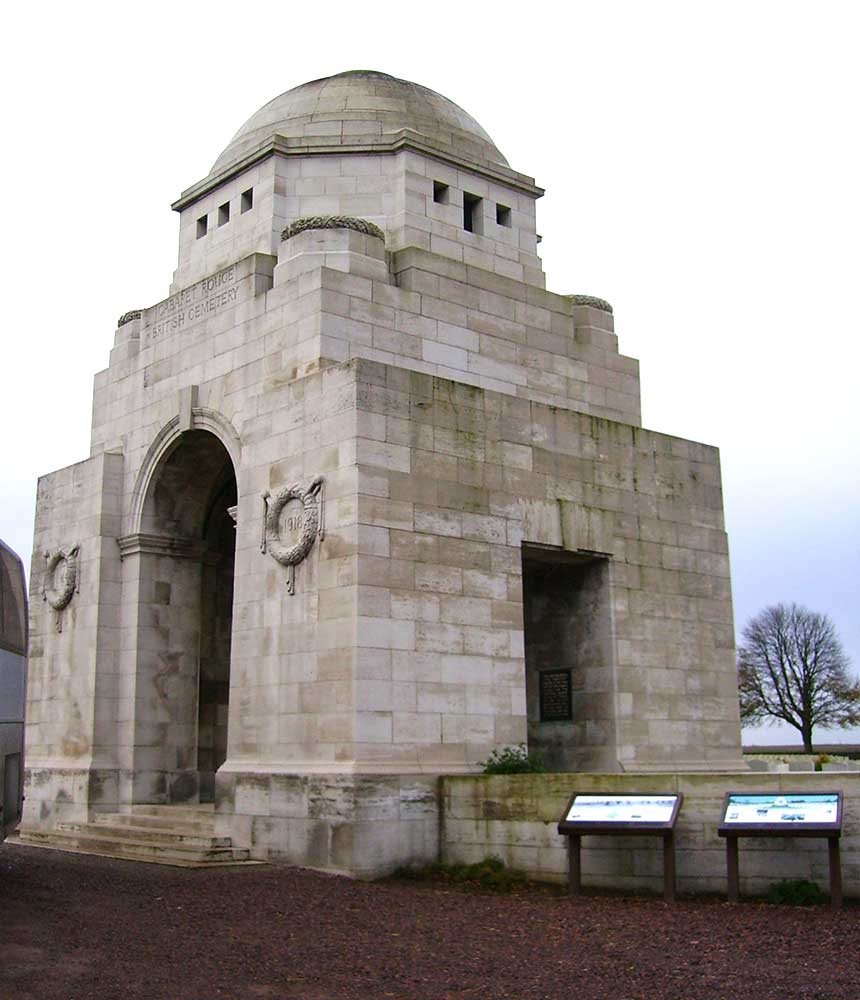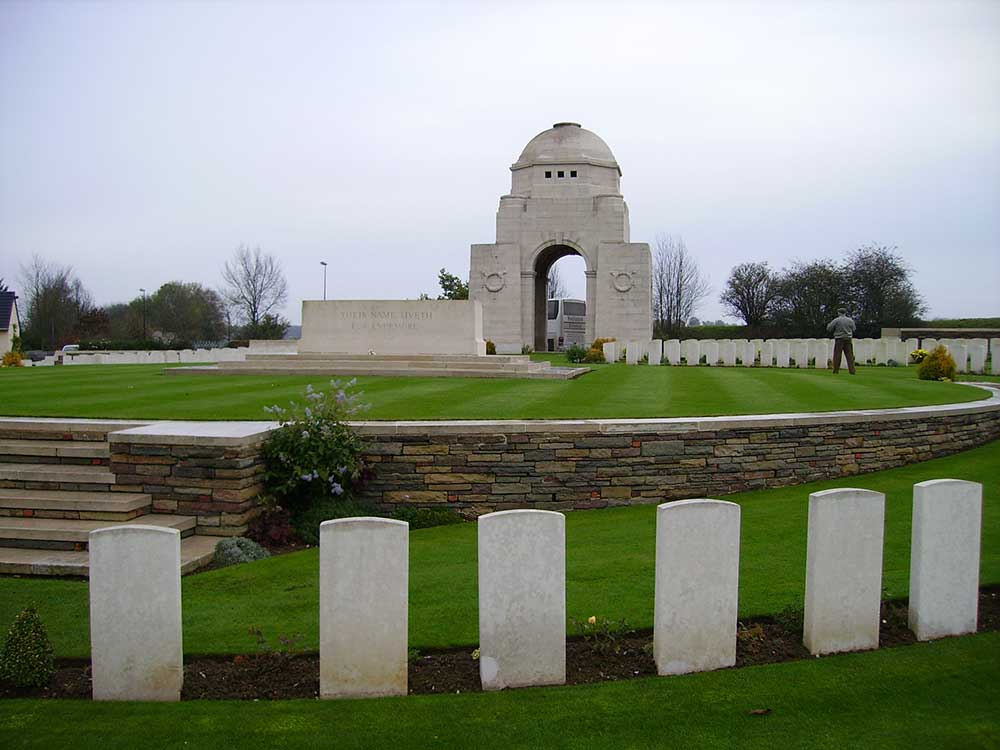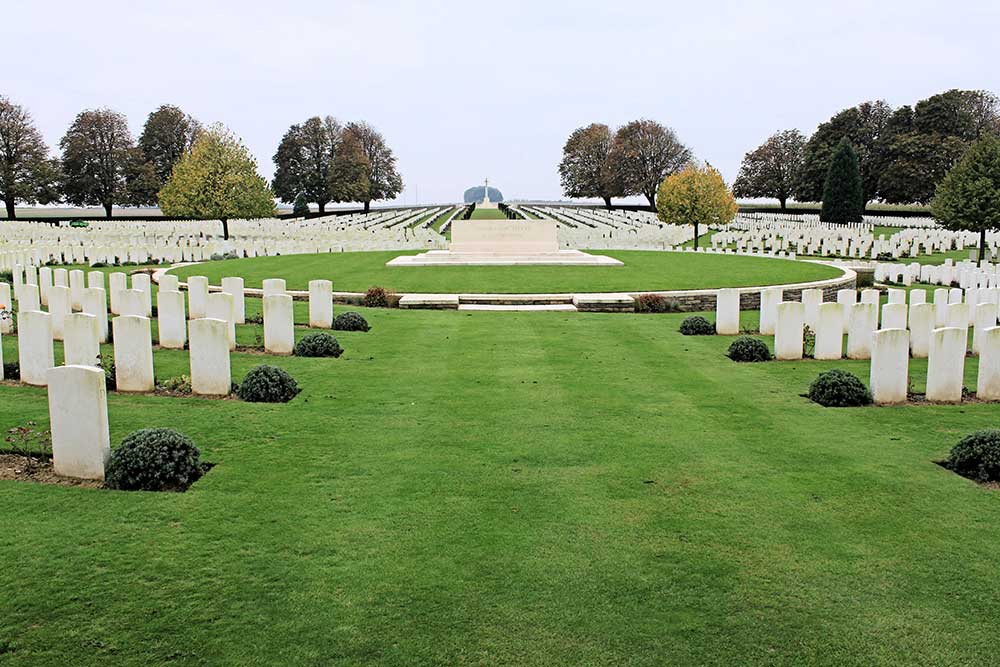Cabaret-Rouge British Cemetery
On 26 September 1915, Souchez was taken from the Germans by French troops, who handed the sector over to Commonwealth forces the following March. The village was completely destroyed. The "Cabaret Rouge" was a house on the main road about 1 kilometre south of the village, at a place called Le Corroy, near the cemetery. On the east side, opposite the cemetery, were dugouts used as battalion headquarters in 1916. The communication trenches ended here, including a very long one named from the Cabaret.
The cemetery was begun by Commonwealth troops in March 1916, used until August 1917 (largely by the 47th (London) Division and the Canadian Corps) and - at intervals - until September 1918; these original burials are in Plots I to V inclusive. It was greatly enlarged after the Armistice when more than 7,000 graves were brought in from the battlefields of Arras and from 103 other burial grounds in the Nord and the Pas-de-Calais. The cemetery now contains 7,655 Commonwealth burials of the First World War, more than half of them unidentified. There is also one Second World War burial. The cemetery was designed by Sir Frank Higginson.
There are 47 Canadians buried here from the Battle of Vimy Ridge.
Directions
Souchez is a village 3.5 kilometres north of Arras on the main road to Bethune. The cemetery is about 1.5 kilometres south of the village on the west side of the D937 Arras-Bethune Road.
- Date modified:


